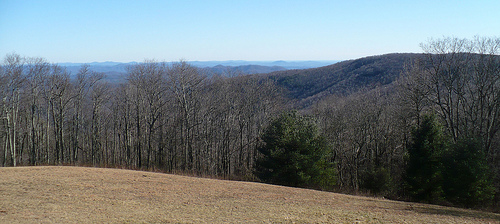
Brown mountain lights are unexplained phenomena that appear low in the air under favorable atmospheric conditions, grow in size, and then linger for a few minutes before fading away. Brown Mountain is located on the Burke-Caldwell county line, approximately half a mile west of Wilson Creek and northwest of Morganton. The lights have been documented since 1833, prompting investigation and inspiring song and story. As few as one and as many as a dozen lights might be seen at one time. They are mostly white but occasionally show a red, blue, or yellowish tinge. The lights appear most often on clear, warm, summer evenings, beginning shortly after dark.
Although various authorities have studied the Brown Mountain Lights, no entirely satisfactory scientific explanation has been offered. The U.S. Geological Survey has suggested that the lights may be the result of refraction of headlights on trains or automobiles in the valley. The National Geographic Society reports that discharges of static electricity might be the source of the lights. Folklorists credit an Indian brave searching by torchlight for his lost love.
The lights are best seen from the Lost Cove overlook on the Blue Ridge Parkway, near Milepost 310 on the southeast side of the road, northeast of its junction with N.C. 181.